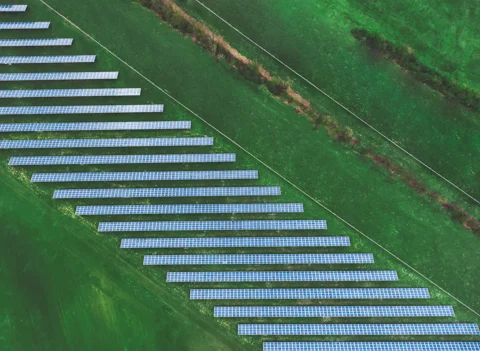Airline companies must have decreased their net CO2 emissions to 0 by 2050. This strict requirement is set by a group of 122 big institutional investors in the sector, including APG, which invests over 3.4 billion Euros in the aviation industry by order to ABP, bpfBOUW, SPW and PPF APG. With a jointly managed capital of 6.4 trillion Euros, the investors expect they will be able to make a difference in realizing this goal. What is APG’s contribution going to be? We asked Lucian Peppelenbos, Team Manager GRIG and HansWerner Hitge, senior portfolio manager of Developed Markets Equities.
What are the main reasons for this appeal to the sector?
Lucian: “This agreement to stimulate the aviation sector to become sustainable together is part of a bigger collaboration: Climate Action 100 plus. This consists of over 400 investors worldwide, which challenge the biggest emitters of CO2 regarding climate. It also includes airline companies. We believe the momentum is there to bring awareness regarding aviation. The aviation sector in the United Kingdome recently set itself the goal to decrease CO2 emission down to 0 by 2050. That’s in line with our own objective, so that’s nothing new.”
Why should the sector worry about that? The aviation sector is not even included in the Paris climate agreement.
Lucian: “That doesn’t mean that the sector hasn’t been given any objectives. Branch organization IATA has expressed the ambition to cut the CO2 emission in half, as compared to 2005. A good step, but we think the bar can be set quite a bit higher.”
How is the sector going to achieve those objectives?
HansWerner: “There is still a lot of profit to be had with better efficiency: for example, by using the capacity of an airplane optimally. In addition, technological development can also make an important contribution. The technology to make organic fuel already exists. It’s just pretty expensive at this point.”
What about electric flying?
HansWerner: “I don’t see that happening anytime soon. On a small scale you see a few electric airplanes. But to get a 140-tonne machine off the ground with electrical power is a step too far. We have to be realistic about that: flying with zero emissions is in the distant future.”
Then how will it be possible to achieve 0 emissions by 2050?
Lucian: “We’re talking about the net-emissions here. A portion of the emissions will have to be compensated by, for example, planting new trees. The sector must strive to make this compensation portion as small as possible.”
How will you stimulate the sector to become more sustainable?
HansWerner: “In many cases, that is not even necessary. Take the British aviation sector, for example. The sector is realizing more and more that becoming more sustainable in many cases also means saving costs. More economical engines also have a considerable effect on the fuel consumption.” Lucian: “Of course, where necessary, we will also be having discussions with companies, independently, but also in collaboration with other investors, if the situation requires it.”
Lucian: “We’re hoping that showing good examples will create a domino effect. Last year, a tool was brought to the market for the aviation sector, which can be used to easily compare sustainable performances to each other, for example. What is striking is that there are big differences: that means there is still a lot of room for improvement.”



